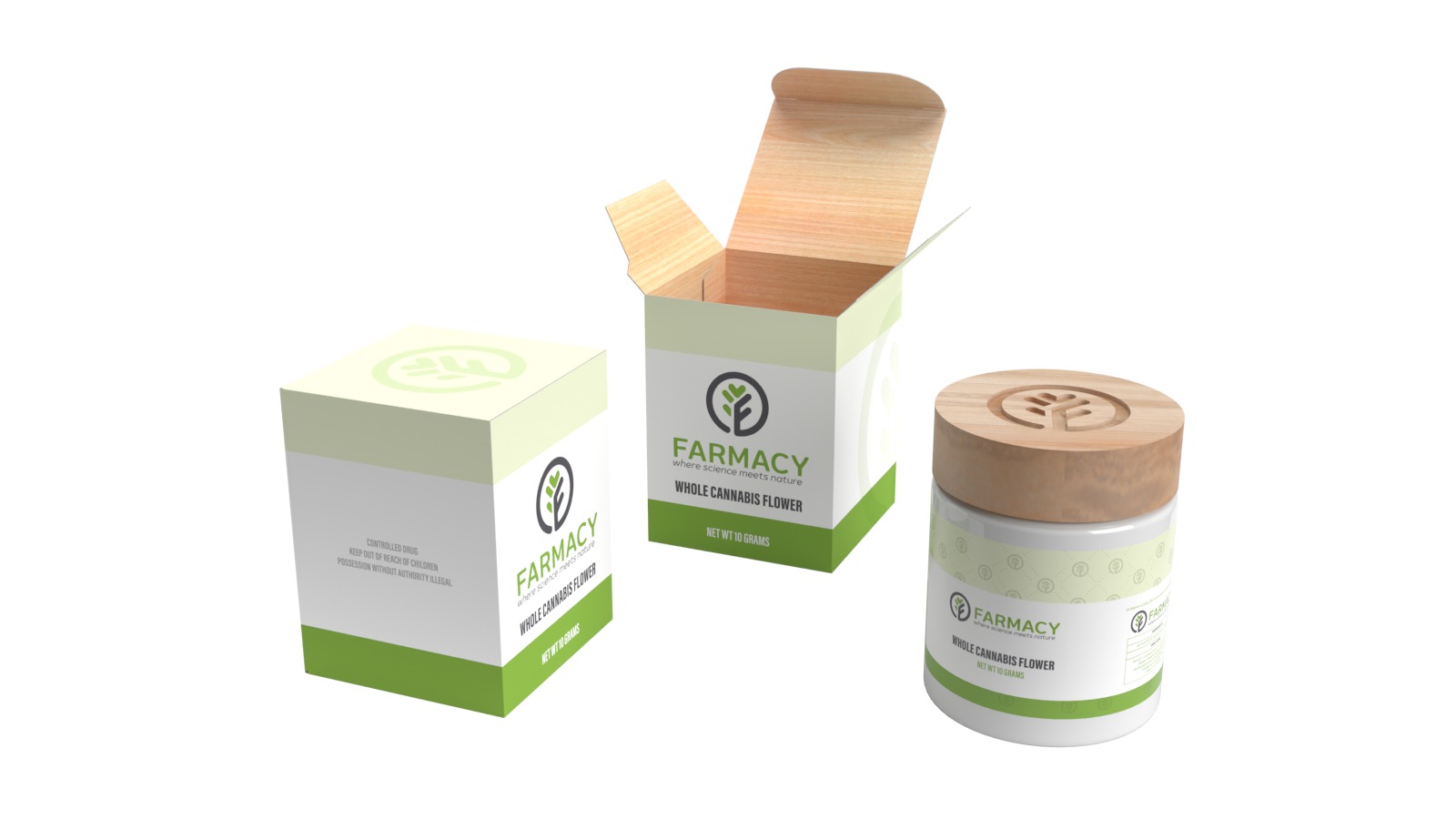
Medical Cannabis for Chronic Pain: Analysis
Cannabis sativa has a long history as a medicinal plant, likely dating back more than two millennia (Russo et al., 2007). It was available as a licensed medicine in the United States for about a century before the American Medical Association removed it from the 12th edition of the U.S. Pharmacopeia (IOM, 1999). In 1985, pharmaceutical companies received approval to begin developing Δ9-tetrahydrocannabinol (THC) preparations—dronabinol and nabilone—for therapeutic use, and as a result, cannabinoids were reintroduced into the armamentarium of willing health care providers (Grotenhermen and Müller-Vahl, 2012). Efforts are now being put into the trials of cannabidiol as a treatment for conditions such as epilepsy and schizophrenia,1 although no such preparations have come to market at this time. Nabiximols, an oromucosal spray of a whole cannabis plant extract with a 1:1 ratio of THC to cannabidiol (CBD), was initially licensed and approved in Europe, the United Kingdom, and Canada for the treatment of pain and spasticity associated with multiple sclerosis (GW Pharmaceuticals, 2016; Pertwee, 2012), but it continues to undergo evaluation in Phase III clinical trials in the United States.2 Efforts are under way to develop targeted pharmaceuticals that are agonists or antagonists of the cannabinoid receptors or that modulate the production and degradation of the endocannabinoids, although such interventions have not yet demonstrated safety or effectiveness. Nonetheless, therapeutic agents targeting cannabinoid receptors and endocannabinoids are expected to become available in the future.
The renewed interest in the therapeutic effects of cannabis emanates from the movement that began 20 years ago to make cannabis available as a medicine to patients with a variety of conditions. It was in 1996 that Arizona and California first passed medicinal cannabis legislation, although Arizona later rescinded the approval, so it would be California that paved the way. At the time that this report was written, in 2016, 28 states and the District of Columbia had legalized the medical use of cannabis; 8 states had legalized both medical and recreational use of cannabis; and another 16 states had allowed limited access to low-THC/high-CBD products (i.e., products with low levels of THC and high levels of CBD) (NCSL, 2016). A recent national survey showed that among current adult users, 10.5 percent reported using cannabis solely for medical purposes, and 46.6 percent reported a mixed medical/recreational use (Schauer et al., 2016). Of the states that allow for some access to cannabis compounds, cancer, HIV/AIDS, multiple sclerosis, glaucoma, seizures/epilepsy, and pain are among the most recognized qualifying ailments (Belendiuk et al., 2015; NCSL, 2016). There are certain states that provide more flexibility than others and that allow the use of medical cannabis for the treatment of any illness for which the drug provides relief for the individual. Given the steady liberalization of cannabis laws, the numbers of these states are likely to increase and therefore support the efforts to clarify the potential therapeutic benefits of medical cannabis on various health outcomes.
For example, the most common conditions for which medical cannabis is used in Colorado and Oregon are pain, spasticity associated with multiple sclerosis, nausea, posttraumatic stress disorder, cancer, epilepsy, cachexia, glaucoma, HIV/AIDS, and degenerative neurological conditions (CDPHE, 2016; OHA, 2016). We added to these conditions of interest by examining lists of qualifying ailments in states where such use is legal under state law. The resulting therapeutic uses covered by this chapter are chronic pain, cancer, chemotherapy-induced nausea and vomiting, anorexia and weight loss associated with HIV, irritable bowel syndrome, epilepsy, spasticity, Tourette syndrome, amyotrophic lateral sclerosis, Huntington's disease, Parkinson's disease, dystonia, dementia, glaucoma, traumatic brain injury, addiction, anxiety, depression, sleep disorders, posttraumatic stress disorder, and schizophrenia and other psychoses. The committee is aware that there may be other conditions for which there is evidence of efficacy for cannabis or cannabinoids. In this chapter, the committee will discuss the findings from 16 of the most recent, good- to fair-quality systematic reviews and 21 primary literature articles that best address the committee's research questions of interest.
As a reminder to the reader, several of the prioritized health endpoints discussed here in Part II are also reviewed in chapters of Part III; however, the research conclusions within these chapters may differ. This is, in part, due to differences in the study design of the evidence reviewed (e.g., randomized controlled trials [RCTs] versus epidemiological studies), differences in the characteristics of cannabis or cannabinoid exposure (e.g., form, dose, frequency of use), and the populations studied. As such, it is important that the reader is aware that this report was not designed to reconcile the proposed harms and benefits of cannabis or cannabinoid use across chapters.
CHRONIC PAIN
Relief from chronic pain is by far the most common condition cited by patients for the medical use of cannabis. For example, Light et al. (2014) reported that 94 percent of Colorado medical marijuana ID cardholders indicated “severe pain” as a medical condition. Likewise, Ilgen et al. (2013)reported that 87 percent of participants in their study were seeking medical marijuana for pain relief. In addition, there is evidence that some individuals are replacing the use of conventional pain medications (e.g., opiates) with cannabis. For example, one recent study reported survey data from patrons of a Michigan medical marijuana dispensary suggesting that medical cannabis use in pain patients was associated with a 64 percent reduction in opioid use (Boehnke et al., 2016). Similarly, recent analyses of prescription data from Medicare Part D enrollees in states with medical access to cannabis suggest a significant reduction in the prescription of conventional pain medications (Bradford and Bradford, 2016). Combined with the survey data suggesting that pain is one of the primary reasons for the use of medical cannabis, these recent reports suggest that a number of pain patients are replacing the use of opioids with cannabis, despite the fact that cannabis has not been approved by the U.S. Food and Drug Administration (FDA) for chronic pain.
Are Cannabis or Cannabinoids an Effective Treatment for the Reduction of Chronic Pain?
Systematic Reviews
Five good- to fair-quality systematic reviews were identified. Of those five reviews, Whiting et al. (2015) was the most comprehensive, both in terms of the target medical conditions and in terms of the cannabinoids tested. Snedecor et al. (2013)was narrowly focused on pain related to spinal cord injury, did not include any studies that used cannabis, and only identified one study investigating cannabinoids (dronabinol). Two reviews on pain related to rheumatoid arthritis did not contribute unique studies or findings (Fitzcharles et al., 2016; Richards et al., 2012). Finally, one review (Andreae et al., 2015) conducted a Bayesian analysis of five primary studies of peripheral neuropathy that had tested the efficacy of cannabis in flower form administered via inhalation. Two of the primary studies in that review were also included in the Whiting review, while the other three were not. It is worth noting that the conclusions across all of the reviews were largely consistent in suggesting that cannabinoids demonstrate a modest effect on pain. For the purposes of this discussion, the primary source of information for the effect on cannabinoids on chronic pain was the review by Whiting et al. (2015). Whiting et al. (2015) included RCTs that compared cannabinoids to usual care, a placebo, or no treatment for 10 conditions. Where RCTs were unavailable for a condition or outcome, nonrandomized studies, including uncontrolled studies, were considered. This information was supplemented by a search of the primary literature from April 2015 to August 2016 as well as by additional context from Andreae et al. (2015) that was specific to the effects of inhaled cannabinoids.
The rigorous screening approach used by Whiting et al. (2015) led to the identification of 28 randomized trials in patients with chronic pain (2,454 participants). Twenty-two of these trials evaluated plant-derived cannabinoids (nabiximols, 13 trials; plant flower that was smoked or vaporized, 5 trials; THC oramucosal spray, 3 trials; and oral THC, 1 trial), while 5 trials evaluated synthetic THC (i.e., nabilone). All but 1 of the selected primary trials used a placebo control, while the remaining trial used an active comparator (amitriptyline). The medical condition underlying the chronic pain was most often related to a neuropathy (17 trials); other conditions included cancer pain, multiple sclerosis, rheumatoid arthritis, musculoskeletal issues, and chemotherapy-induced pain. Analyses across 7 trials that evaluated nabiximols and 1 that evaluated the effects of inhaled cannabis suggested that plant-derived cannabinoids increase the odds for improvement of pain by approximately 40 percent versus the control condition (odds ratio [OR], 1.41, 95% confidence interval [CI] = 0.99–2.00; 8 trials). The effects did not differ significantly across pain conditions, although it was not clear that there was adequate statistical power to test for such differences.
Only 1 trial (n = 50) that examined inhaled cannabis was included in the effect size estimates from Whiting et al. (2015). This study (Abrams et al., 2007) also indicated that cannabis reduced pain versus a placebo (OR, 3.43, 95% CI = 1.03–11.48). It is worth noting that the effect size for inhaled cannabis is consistent with a separate recent review of 5 trials of the effect of inhaled cannabis on neuropathic pain (Andreae et al., 2015). The pooled ORs from these trials contributed to the Bayesian pooled effect estimate of 3.22 for pain relief versus placebo (95% CI = 1.59–7.24) tested across 9 THC concentrations. There was also some evidence of a dose-dependent effect in these studies.
Primary Literature
In the addition to the reviews by Whiting et al. (2015) and Andreae et al. (2015), the committee identified two additional studies on the effect of cannabis flower on acute pain (Wallace et al., 2015; Wilsey et al., 2016). One of those studies found a dose-dependent effect of vaporized cannabis flower on spontaneous pain, with the high dose (7 percent THC) showing the strongest effect size (Wallace et al., 2015). The other study found that vaporized cannabis flower reduced pain but did not find a significant dose-dependent effect (Wilsey et al., 2016). These two studies are consistent with the previous reviews by Whiting et al. (2015)and Andreae et al. (2015), suggesting a reduction in pain after cannabis administration.
Discussion of Findings
The majority of studies on pain cited in Whiting et al. (2015) evaluated nabiximols outside the United States. In their review, the committee found that only a handful of studies have evaluated the use of cannabis in the United States, and all of them evaluated cannabis in flower form provided by the National Institute on Drug Abuse that was either vaporized or smoked. In contrast, many of the cannabis products that are sold in state-regulated markets bear little resemblance to the products that are available for research at the federal level in the United States. For example, in 2015 between 498,170 and 721,599 units of medical and recreational cannabis edibles were sold per month in Colorado (Colorado DOR, 2016, p. 12). Pain patients also use topical forms (e.g., transdermal patches and creams). Thus, while the use of cannabis for the treatment of pain is supported by well-controlled clinical trials as reviewed above, very little is known about the efficacy, dose, routes of administration, or side effects of commonly used and commercially available cannabis products in the United States. Given the ubiquitous availability of cannabis products in much of the nation, more research is needed on the various forms, routes of administration, and combination of cannabinoids.
CONCLUSION 4-1 There is substantial evidence that cannabis is an effective treatment for chronic pain in adults.
- Popular Tag:
- News


Comment (0)